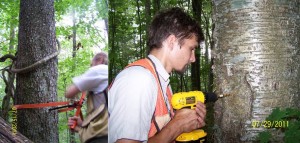In the early 2000s, Hugh Morton, former owner of Grandfather Mountain reported an unusual number of large, dead trees high on the slopes of the mountain. The verbal report was investigated by the US Forest Service’s Eastern Forests Environmental Threat Assessment Center (EFETAC) via aerial flyovers and ground-truthing. It was discovered that the dead trees were large-diameter yellow birch trees (Betula alleghaniensis).
Yellow birch trees, along with other hardwoods, comprise high elevation maple-beech-birch and spruce-fir forest communities. The Southern Appalachian mountains offer one of the last refuges for these forest types due to its climate. Sadly, these communities are subject to high concentrations of acid deposition, which leads to the leaching of elements essential to healthy tree growth and survival. Calcium, for example, bolsters the ability of yellow birch trees to regenerate after injury or damage and is readily leached out of the soil from acid deposition. Based on EFETAC’s initial look, it appeared that calcium-dependent yellow birch trees were on the decline. Were they being impacted by acid deposition? Was there enough calcium in the soil for them to survive? How do they respond to damage in calcium poor soil? We need to know more. So begins the story of Equinox’ three year partnership with EFETAC to understand the dynamics of acid deposition and yellow birch forest communities.
The first year of study began by collecting data at sites where a range of different size yellow birch trees occur. Equinox collected ecological data such as site elevation, aspect, slope, and regeneration. Data was collected for each yellow birch tree including the tree’s height, diameter at breast height, canopy condition, and whether or not the tree had any existing wounds or other damage. Data was also collected for black cherry (Prunus serotina), red spruce (Picea rubra), and sugar maple (Acer saccharum) trees occurring at the site as a control. Soil samples were collected at the base of three randomly selected yellow birch trees and sent to a laboratory to analyze the mineral content of the soil (below).
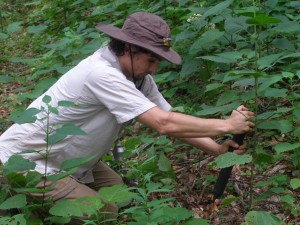
The idea was to obtain a physical and chemical profile of each site in order to determine sites most susceptible to acid deposition. Although inconclusive, it appeared that the most damage was observed on the largest yellow birch trees in the highest, most north-facing plots with the lowest soil pH.
The second year of the study delved deeper into tree-specific data at each site. Twenty-four sites with the most acidic soils were revisited where a 2 inch core was extracted from the three largest yellow birch trees. On the opposite side of the tree, a 3/8 inch hole was drilled into the tree to simulate a damage wound (below).
As a control, cores were taken and wounds were also made on the three largest black cherry trees at the site. Tree damage data was again collected to determine if any change had occurred from Year 1. The tree cores were sent to the Northern Research Station in Minnesota for various chemical analyses and age determination, while the drilled holes will be used to evaluate wound response over time.

At the close of Year 2, each plot was revisited and observations were made regarding the tree’s response to the wound. Observations showed that yellow birch trees were slow to heal; they exhibited almost no healing and even showed some signs of decay. Black cherry trees had begun to heal the wound with sap or resin and showed very little decay, if any. It appears that black cherry trees are more capable of retaining calcium in environments where it is limited and can therefore heal faster. The second year study ended with a snowy field day and we were glad to overwinter inside while poring over the data we collected.
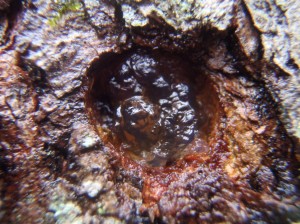
The third and final year of the study was spent monitoring the wound response of damaged trees. Each site was revisited and every cored and damaged tree was evaluated for heal or decay. Humus samples at the base of the three largest yellow birch trees at all plots were also taken in Year 3 to chemically analyze the ionic concentrations of essential nutrients as well as retention of heavy metals associated with acid deposition.
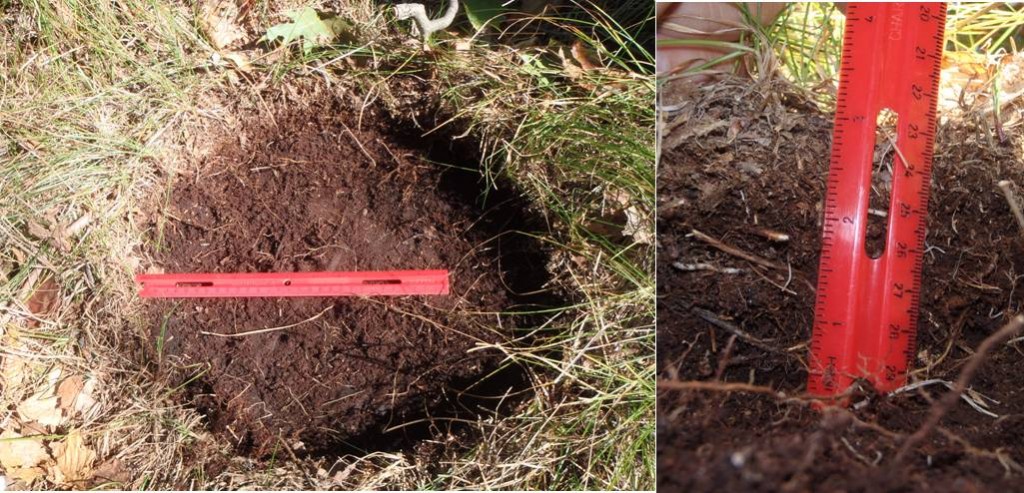
By this time, I knew the plots like the back of my hand – at certain plots I could even remember the types of lichen growing on each tree! Through working with the same tree individuals for so long, it was as though a relationship was formed between the forest and me. It was exciting to go back and check on the trees – not surprisingly, some pretty consistent results were observed. Across all plots, nearly every single black cherry tree that was damaged showed a 100% closure! Sadly, the same was not true for YB; wounds were still open, sap was leaking, and the bark was swelling. The wound holes were, for the most part, dark and damp with signs of decay beginning to show. I can’t discredit the few birch that represented an aberration from the norm by actively healing and closing their wounds – for some reason or another (only time and testing will tell), these outliers managed to initiate the curative process. Data collection for Year 3 was concluded in November 2012, and for a second consecutive season, there was snow at the last plot.
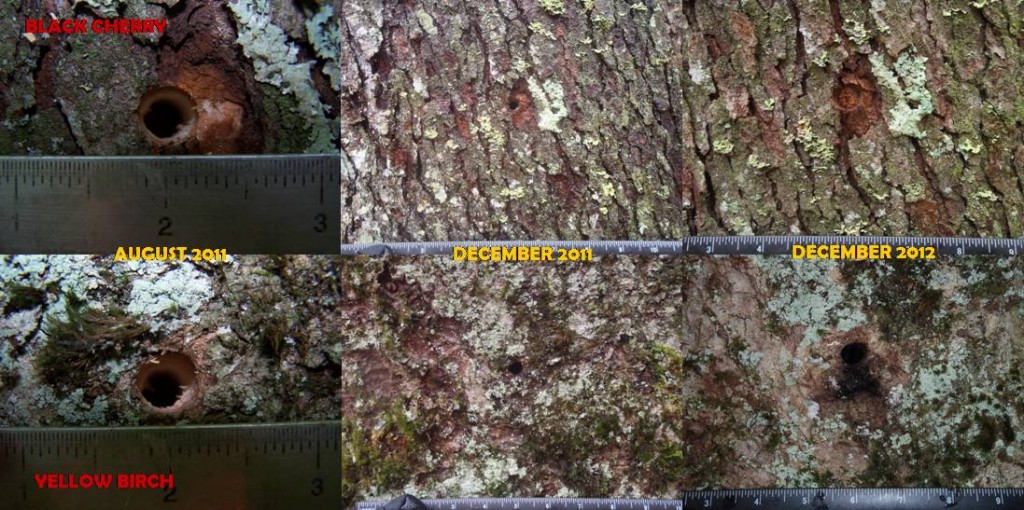
So where does this research project go from here? What does the data tell us about how yellow birch trees are responding to acid deposition? Because the onus of critical data analysis lies in the hands of the EFETAC, we won’t know their scientific conclusions until mid 2013. But, coming from the perspective of one who has had a hand in collecting nearly every piece of relevant data on the project, I have noticed a few nominal patterns myself. In general, lower elevation stands of yellow birch seem less susceptible to the detrimental effects of acid deposition – they exhibit a more normalized soil pH as well as lower damage values. Conversely, large-diameter (>15-30 inches diameter at breast height) yellow birch occurring at high elevations showed significantly more damage and a far lower (more acidic) soil pH. Interestingly, it appeared to me that YB plots in close proximity to perennial streams were healthier than those in drier settings. I also noticed that seedling and sapling regeneration was higher in plots that exhibited characteristics of the Rich Cove community type: fertile, mesic soils on steeper, more north-facing slopes supporting diverse plant species. Furthermore, those plots that contained ample downed woody debris from YB trees supported greater regeneration, with groups of the young YB growing on ‘nurse logs’ (see below).
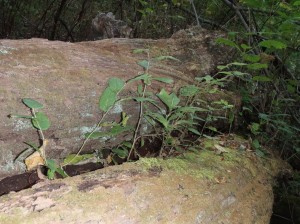
Even after three years of observing the same trees in their same environments, carefully tracking their health, monitoring their response to wounding, the soils, cores, hundreds of datasheets, plastic bags, miles of hiking on beautiful land…despite all of the research, it is still difficult to hypothesize what will become of yellow birch trees in the Southern Appalachian mountains. But what is not debatable is the reality of climate change and the resulting acid deposition that is affecting yellow birch at high elevations – the trees are dying, succumbing to some otherworldly, man-made blight. Yet, hope lies in research projects like these, where humans strive to understand the ramifications of their life processes and how they apply to a natural world that is far greater and lasting than the legacy they’ll leave behind.
-Owen Carson, Field Technician & Associate Ecologist
